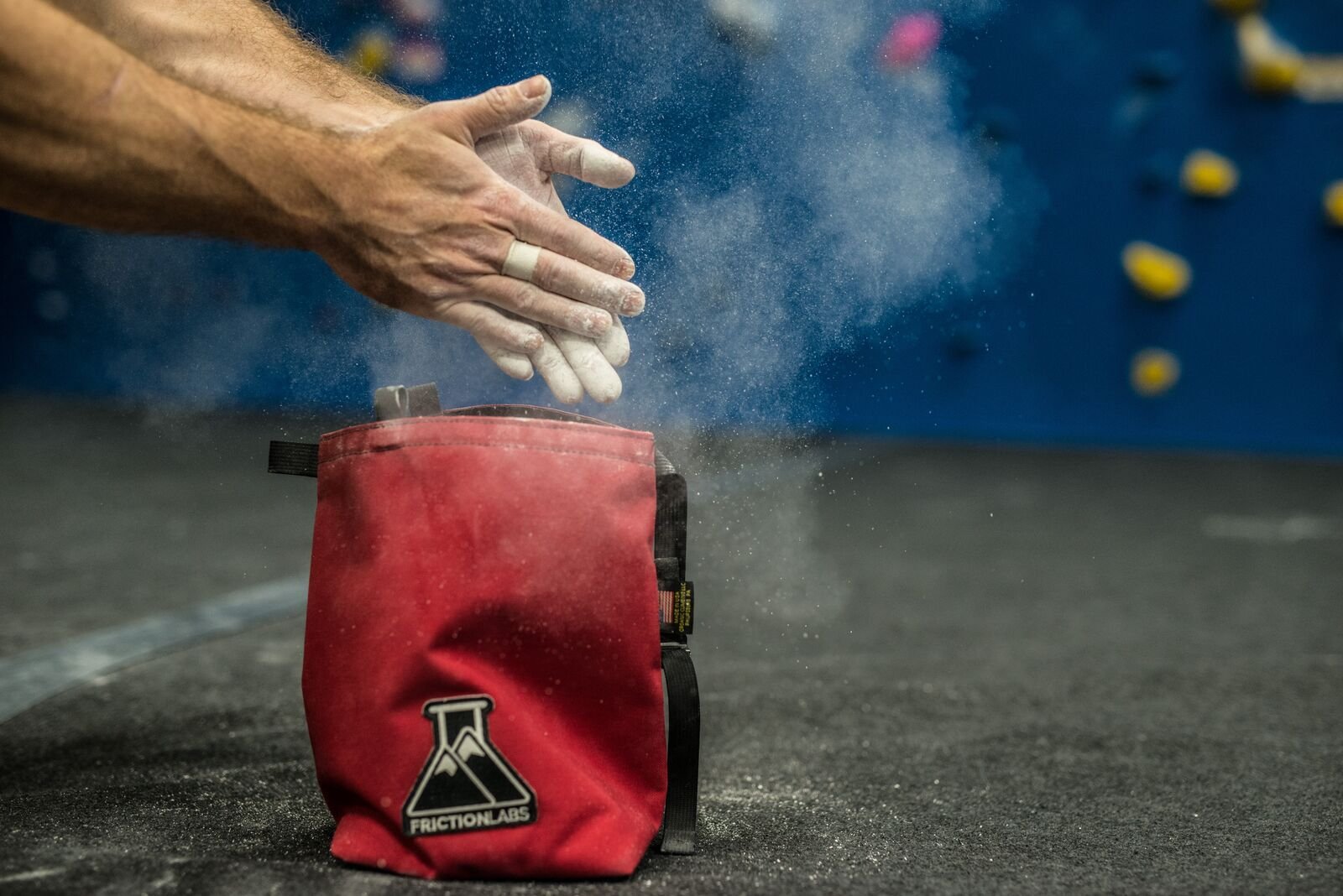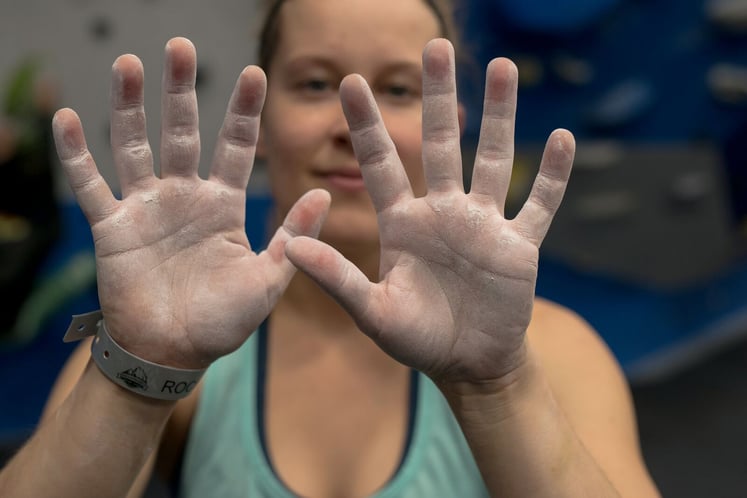Friction Tips (climbing skin care for max grip)
Rock Climbing | Climbing Tips | Start Climbing | bouldering | outdoor climbing
In honor of our annual West Coast Friction Series competition, let's talk all things friction to get you (and your skin) in Peak Performance shape. Whether you're a seasoned climber or just starting out, caring for your skin is crucial for optimal sendage. In this blog, we'll explore five essential tips tailored specifically for climbers aiming to achieve maximum friction all while taking care of their precious skin.
start fresh!
It may seem counterintuitive to get your hands wet before a climbing session, but washing your hands before you start gripping grabs is our number one tip for friction. Ridding your hands of the oils that have built up through the day will help chalk adhere better and last longer (not to mention it keeps routes free from nasty germs).
let’s chalk about it
Speaking of chalk—when it comes to enhancing grip and reducing sweat-induced slippage, climbing chalk is a game-changer. Climbing chalk, typically made from magnesium carbonate, absorbs moisture from your hands, providing a dry and grippy surface for better friction against holds.
There are a lot of options for chalk out there; chunky, semi-chunk, fine, super fine, liquid. Whatever chalk you use, the first application is the most important. It builds up a good base layer and reduces the amount of time you have to re-chalk while climbing. Take some time to properly get that first chalk worked into your hands.
all hail calluses
Calluses are thickened patches of skin formed in response to repeated friction and pressure. Climbers love to obsess over calluses and wear them as badges of honor. These become a natural defense mechanism against abrasions and blisters in climbers. It takes a lot of hard work and climbing to build a good callus up, so it's essential to maintain them properly. If calluses get too built up, they run the risk of tearing off and becoming the dreaded flapper or blister. Regularly file down and trim rough or uneven calluses with sandpaper or nail files to prevent them from becoming too thick and prone to tearing. Find the sweet spot and avoid over-trimming calluses, as they serve as a protective barrier for your skin during climbing.
use climbing tape wisely
Climbing tape is a versatile tool that can provide support, protection, and stability for your hands and fingers during climbing. Whether you are dealing with minor cuts, blisters, or need extra support for tendons and joints, climbing tape can be a lifesaver. Balance with tape can be important as too much tape can lead to less friction on the holds, especially on slopers. Remember, friction is the unsung hero of climbing, providing the essential grip between a climber's skin and the rock surface. It's the force that allows climbers to securely grasp holds, maintain stability, and execute precise movements with confidence and control.

palm balms
Constant exposure to rough rock surfaces can take a toll on your skin, leading to calluses, abrasions, and even tears. To maintain healthy and resilient skin, it's essential to prioritize climbing skincare. Regularly moisturize your hands after-climbing sessions and invest in a high-quality climbing-specific hand cream such as Rhino Skin or Climb-on. We carry a fleet of skin care products in your local Movement gear shop!
On the flip side, we want our skin to remain strong so we don’t want to over-moisturize and soften out our hands as it could lead to more blisters. Some climbers avoid moisture like it’s the plague. But climbing skincare, like a technical slab climb, is all about balance. You want skin that is hard as nails, but not so hard it cracks under the slightest pressure, and supple enough to work into the texture of holds without flaking right off.

take care of your skin and climb harder
Achieving maximum friction and grip while climbing requires more than just physical strength and technique; it demands proper skin care and attention to detail. By incorporating these five essential skin care tips into your climbing routine, you can enhance your performance, reduce the risk of injuries, and climb with confidence knowing that you're taking care of your skin. So, chalk up and get after it!


